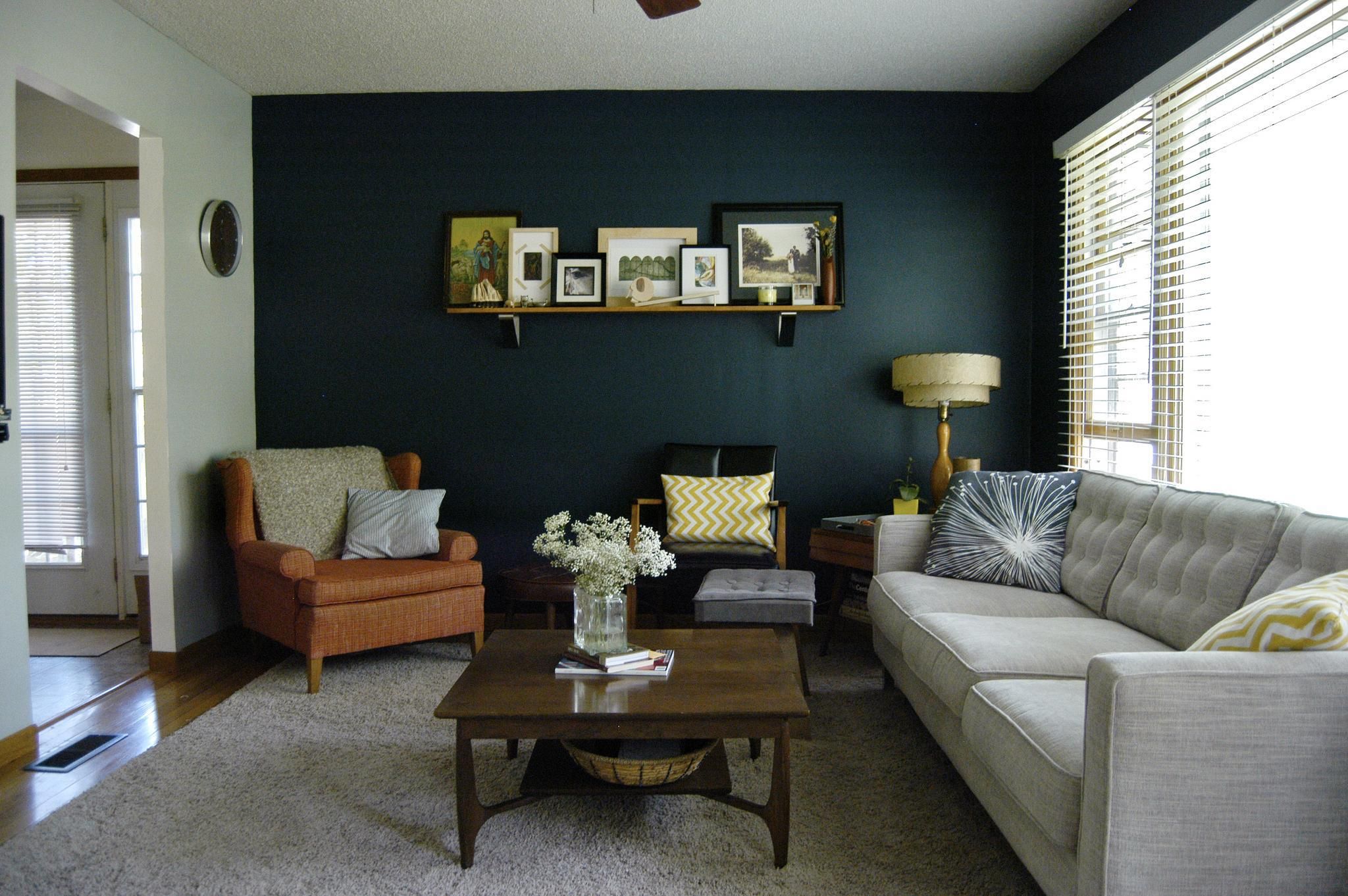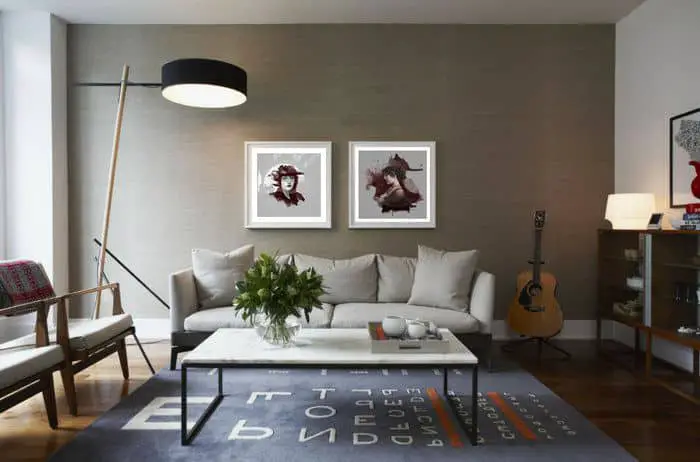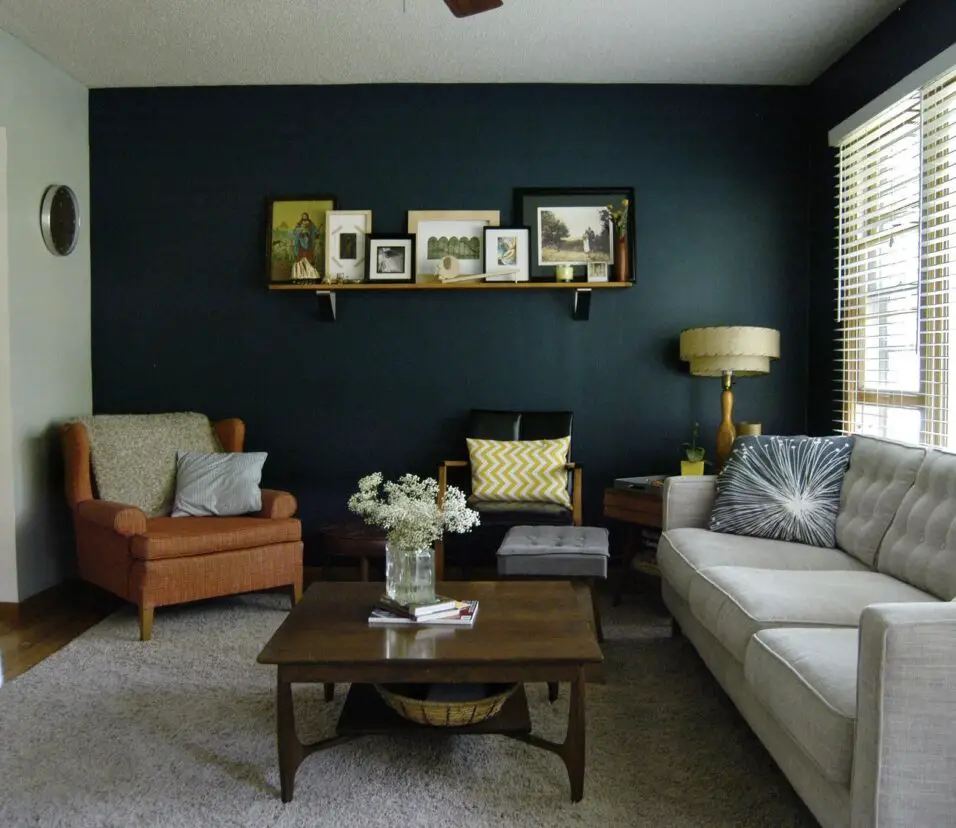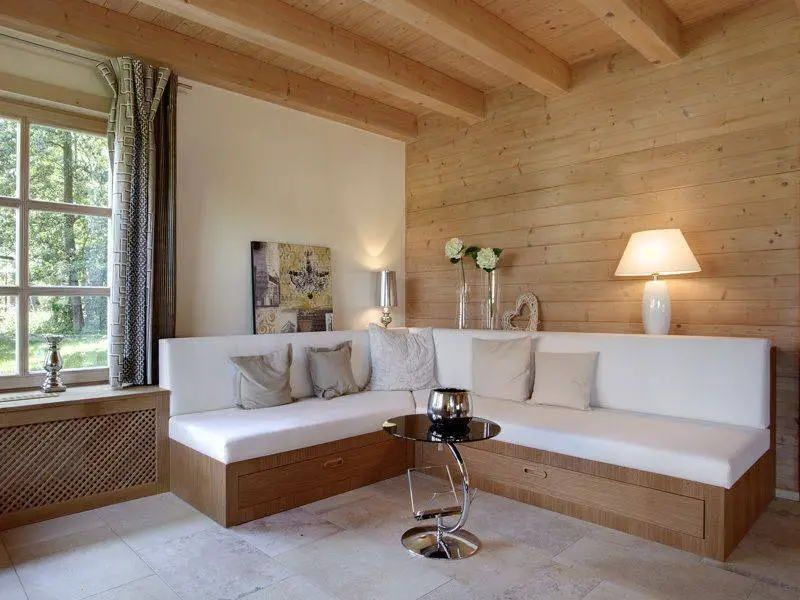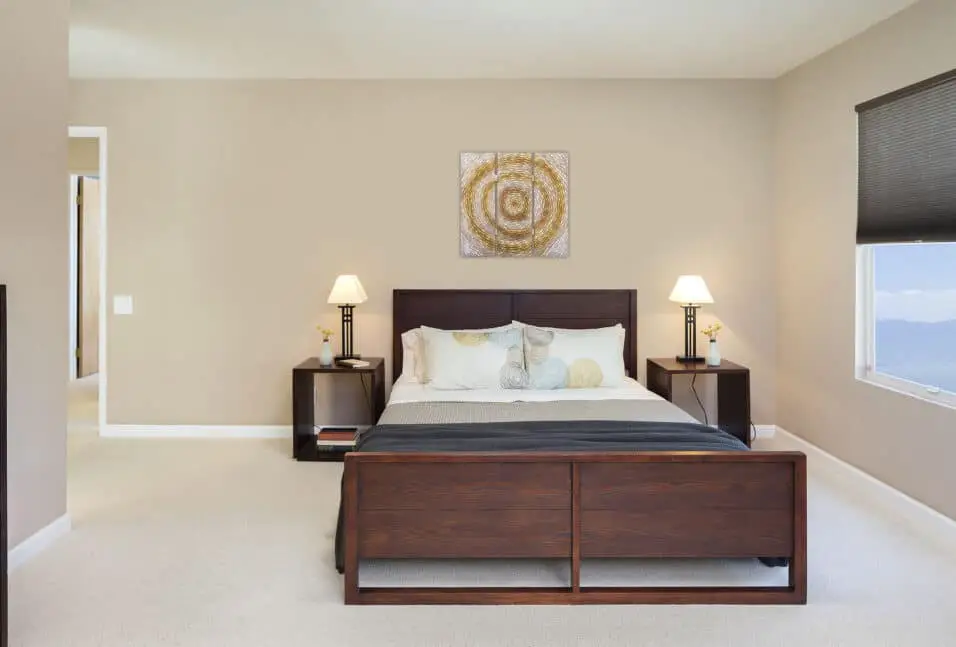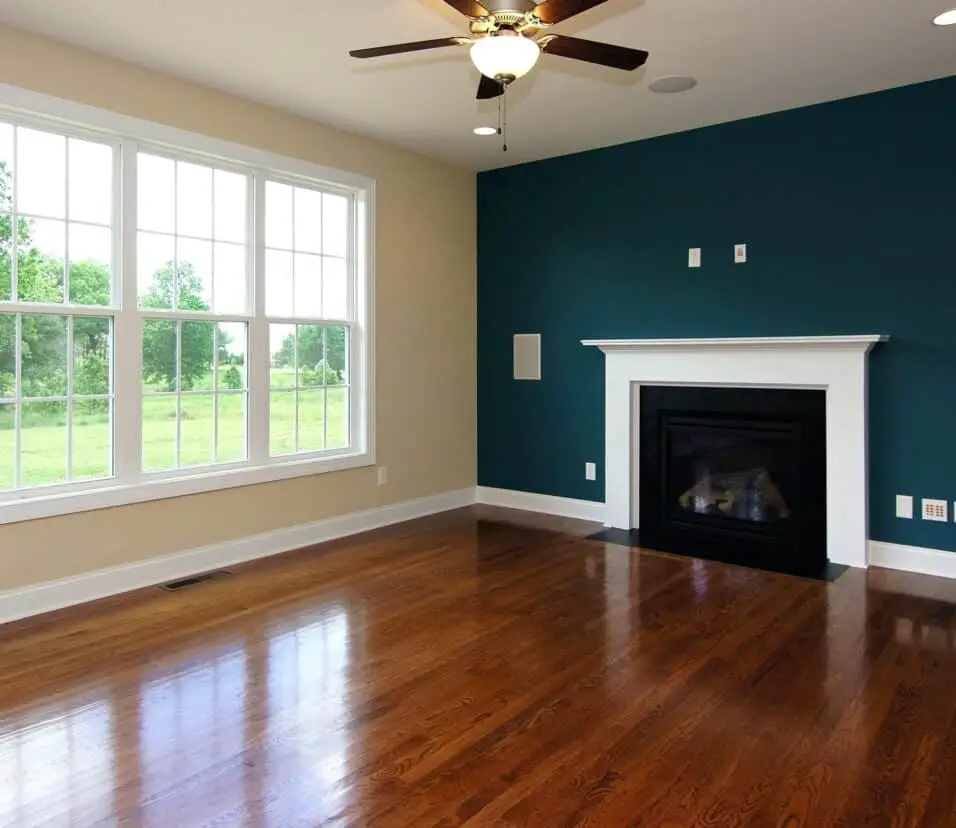Which Wall Should Be The Accent Wall
Introduction
Which Wall Should Be The Accent Wall: When it comes to interior design, one of the most effective ways to add visual interest and personality to a room is by creating an accent wall. An accent wall is a single wall that is painted or decorated differently from the other walls in a space, creating a focal point and adding depth to the overall design. However, with so many options available, it can be challenging to determine which wall should be the accent wall. In this article, we will explore various factors to consider when choosing the perfect accent wall for your space.
Before delving into the specifics of selecting an accent wall, it is essential to understand the purpose it serves in interior design. An accent wall can serve multiple functions, depending on the desired effect. It can create a sense of drama, highlight architectural features, or even define different zones within a room. By drawing attention to a particular wall, an accent wall can transform the entire ambiance of a space, making it more visually appealing and engaging.
Color and pattern play a vital role in accent wall selection. The color you choose should complement the overall color scheme of the room while adding a pop of visual interest. Bold and vibrant colors can create a dramatic effect, while softer hues can provide a more subtle touch. Additionally, patterns, such as stripes or geometric designs, can add texture and dimension to the accent wall. By experimenting with different color and pattern options, you can find the perfect combination that enhances the room’s aesthetic appeal.
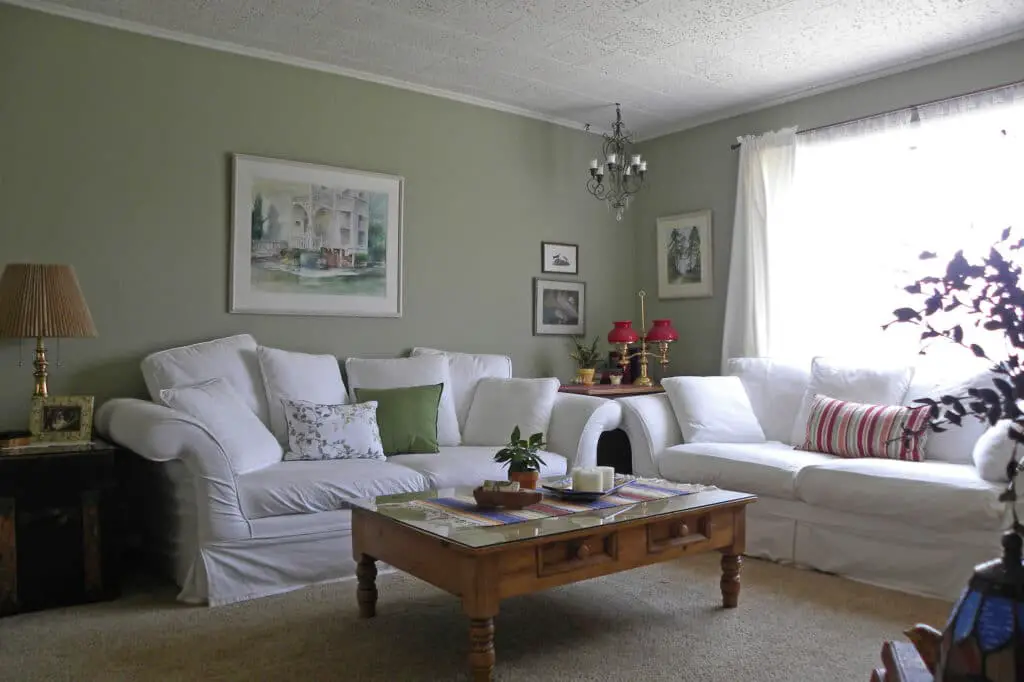
Which wall is supposed to be the accent wall?
In general, the right wall to accent is usually the first one that you see when you enter a room. You and your guests will always have it in view. 2. Look for other architectural clues, such as a fireplace, built-in bookcases, or architectural nooks.
Factors to consider:
When deciding which wall should be the accent wall, several factors come into play. Firstly, the room’s layout and function should be taken into account. Typically, the accent wall is chosen based on its visibility and prominence within the space. For example, in a living room, the wall behind the television or fireplace might be a suitable choice for an accent wall as it naturally draws attention. Similarly, in a bedroom, the wall behind the headboard can serve as an ideal accent wall.
Secondly, architectural features should be considered when selecting the accent wall. If the room has unique architectural elements such as a built-in bookshelf, a large window, or an exposed brick wall, these features can be highlighted by making them the accent wall. By doing so, the accent wall not only adds visual interest but also complements the existing architectural design.
Personal preferences:
Personal preferences play a crucial role in determining the accent wall as well. The color scheme, style, and overall theme of the room should align with the individual’s taste and desired ambiance. Choosing the accent wall involves careful consideration of the room’s layout, architectural features, and personal preferences.
Where should you put an accent wall?
Behind or across from the sofa
An accent wall is a good start to making sense of that space. Behind the entertainment center, the same thing can happen if the wall is long and empty. An accent wall is a great way to add visual interest and personality to a room. But where should you put an accent wall to make the most impact? There are a few factors to consider when deciding on the perfect location for your accent wall.
Firstly, think about the purpose of the accent wall. Are you trying to draw attention to a specific area or feature in the room? If so, placing the accent wall behind that area can help to emphasize it.
Secondly, consider the size and layout of the room.
Thirdly, think about the overall color scheme and style of the room. The accent wall should complement the existing colors and decor in the space.
Lastly, consider the function of the room. Different rooms have different purposes and require different types of accent walls. For example, in a bedroom, a soft and soothing accent wall can create a calming and relaxing atmosphere. In a home office, a bold and energizing accent wall can help to stimulate creativity and productivity. Think about how you want the room to feel and choose an accent wall that reflects that.
Which wall to accent to make a room look bigger?
Highlighting the right wall can make a room look bigger. If you draw attention to one wall, the room might seem bigger. Before drawing attention to a wall, think about the room’s size, natural light, and where the furniture will go. This post talks about how to pick the right wall to make a room bigger.
Some things to think about:
When you accent a wall, you need to think about how big the room is. For feature walls in small rooms, pick the wall that is farthest from the doorway. This makes the space seem deeper by drawing the eye in. Drawing attention to a shorter wall in a bigger room can make it feel cozier and smaller.
If the room is bright, draw attention to the wall across from the windows. By bouncing light off the accent wall, this plan makes the room brighter and more open. Accents on the walls near windows help light up dark rooms. By bouncing light, the accent wall makes the room brighter and bigger.
Drawing attention to the wall behind a fireplace or big picture gives the room more depth and interest. If a room doesn’t have a main point, drawing attention to the wall across from the doorway can help anchor and balance it.
The right wall accent can change the look and size of a room. To make a choice, think about the size of the room, the amount of natural light, and how the furniture is arranged. Using natural light, drawing attention to the farthest wall, or drawing attention to a focus point can create a visual balance that makes the space feel bigger.
Can you have 2 accent walls in a room?
When it comes to accent walls, only one wall gets to be the accent wall. If you were to pick more than one, then it wouldn’t have the same effect and you may as well paint the entire room. Because only one wall gets to be the accent wall, you must choose wisely.
Accent walls have become a popular trend in interior design, allowing homeowners to add a touch of personality and style to their living spaces. Traditionally, an accent wall is a single wall in a room that is painted or decorated differently from the other walls, creating a focal point and adding visual interest. However, the question arises: can you have two accent walls in a room? The answer is yes, but it requires careful consideration and planning to ensure a cohesive and balanced design.
Having two accent walls in a room can work well if done correctly. It can create a dynamic and visually appealing space, especially in larger rooms where multiple focal points are desired. However, it is important to keep in mind that the purpose of an accent wall is to draw attention and create a focal point. Having too many accent walls can result in a chaotic and overwhelming design. Therefore, it is crucial to choose the right walls and colors to maintain a harmonious balance.
Which wall should be painted darker?
Small space, huge impact
Dark colors work well in dark, compact places like a downstairs lavatory or utility space. Dark colors make small, dark spaces appear larger.
When painting a room, choosing the proper wall color is vital for establishing the ideal ambiance and visual appeal. A common challenge for homeowners is choosing which wall to paint darker. This option can greatly affect the room’s appearance, space, and light. This article will discuss how to choose a darker wall based on the room’s arrangement, natural light, and focal points.
Think about room layout:
Which wall to paint darker depends on room layout. Analyze the room’s size and architecture. If the room is long and narrow, painting the shorter walls darker can make it appear wider. For a broad room, painting the longer walls a darker color might make it feel more balanced and inviting. Consider painting the wall behind a fireplace or huge window darker to grab attention and make a statement.
Examine natural lighting:
Natural light is another factor in choosing a darker wall. Check the room’s windows and orientation. A room with lots of natural light can be brightened by painting the wall opposite the windows darker. If the room has limited natural light or small windows, painting the wall next to them darker might add depth and comfort. Balanced light and dark avoids overwhelming or diminishing the space.
Choose focal points:
The main elements of any space are usually artwork, statement furniture, or architectural features. Consider these main points and how to highlight them when choosing a darker wall. Painting the wall behind a large artwork or piece of furniture a darker color might make it stand out. Painting the wall around a built-in bookcase or ornate molding in a deeper color might draw attention to it.
An accent wall draws attention and dimension to a room. It’s a unique wall in color, design, texture, or substance. An accent wall adds drama and highlights a room’s architecture. An accent wall lets you try strong colors or patterns you might not desire on all the walls. It can give individuality and flair to the area as a statement piece. An accent wall can also divide an open floor plan’s living and dining areas.
The accent wall should be carefully chosen when constructing a room. An eye-catching wall with a fireplace or large window is usually best. However, the accent wall must match the room’s color scheme and design to create a harmonic and balanced impression.
How can an accent wall enhance the overall aesthetic of a space?
An a powerful design element that can greatly enhance the overall aesthetic of a space. By strategically choosing a wall to highlight, you can create a focal point that draws attention and adds visual interest to the room. This can be achieved through various means, such as using a contrasting color, unique texture, or eye-catching pattern.
One way an enhances the aesthetic is by creating depth and dimension in the room. By selecting a wall that is different from the others, it adds a sense of visual intrigue and breaks up the monotony of a single color scheme. This can make the space feel more dynamic and visually appealing.
Additionally, an can help to define the style and theme of a room. Whether you choose a bold and vibrant color or a subtle and sophisticated pattern, the can set the tone for the entire space. It can serve as a backdrop for showcasing artwork, furniture, or other decorative elements, allowing them to stand out and make a statement.
What factors should be considered when choosing which wall to make?
When selecting which wall to make the a room, several factors should be taken into consideration. Firstly, it is important to assess the overall layout and architecture of the space. Consider the natural focal points of the room, such as a fireplace, a large window, or a unique architectural feature. These elements can serve as a guide for choosing the wall that will best highlight and enhance the room’s existing focal points.
Another factor to consider is the size and proportion of the room. If the room is small, it is generally recommended to choose a shorter, such as the one opposite the entrance. This can create the illusion of depth and make the room appear larger. On the other hand, in larger rooms, choosing a longer wall can help to visually break up the space and add interest.
Additionally, the color and lighting of the room should be taken into account. If the room receives ample natural light, it is advisable to choose a wall that will not be overpowered by the brightness. Conversely, if the room lacks natural light, selecting a wall with a lighter color or reflective finish can help to brighten the space. It is also important to consider the existing color scheme of the room and choose a wall color that complements or contrasts with the other walls and furnishings.
Are there any specific design principles or guidelines to follow when selecting an accent wall?
When it comes to selecting an accent there are indeed some design principles and guidelines that can help you make the right choice. Firstly, it is important to consider the overall color scheme and style of the room. The should complement the existing colors and decor, rather than clash with them. It should serve as a focal point and enhance the overall aesthetic of the space.
Another factor to consider is the size and shape of the room. If the room is small, it is generally recommended to choose a wall that is opposite the entry point. This can create an illusion of depth and make the room appear larger. On the other hand, in larger rooms, you can choose a wall that already has some architectural interest, such as a fireplace or a large window.
Additionally, it is important to consider the purpose of the accent wall. Are you trying to create a cozy and intimate atmosphere, or do you want to make a bold statement? The color and pattern of the accent wall can greatly impact the mood and atmosphere of the room. For example, warm and earthy tones can create a sense of warmth and comfort, while vibrant and bold colors can add energy and excitement to the space.
How can the color or pattern of an accent wall impact the mood or atmosphere of a room?
The color or pattern of an accent wall can have a significant impact on the mood and atmosphere of a room. Colors have the power to evoke certain emotions and create different atmospheres. When choosing the color for an accent wall, it is important to consider the desired mood or atmosphere you want to create in the space.
Warm colors such as red, orange, and yellow can create a cozy and inviting atmosphere. These colors are known to stimulate energy and can be great choices for accent walls in living rooms or dining areas where you want to encourage conversation and socialization. On the other hand, cool colors like blue, green, and purple can create a calming and relaxing atmosphere. These colors are often used in bedrooms or bathrooms to promote a sense of tranquility and serenity.
The pattern of an accent wall can also play a role in setting the mood of a room. Geometric patterns can add a modern and dynamic feel to a space, while floral or nature-inspired patterns can create a more organic and soothing atmosphere. Additionally, bold and vibrant patterns can inject energy and excitement into a room, while subtle and muted patterns can create a more understated and sophisticated ambiance.
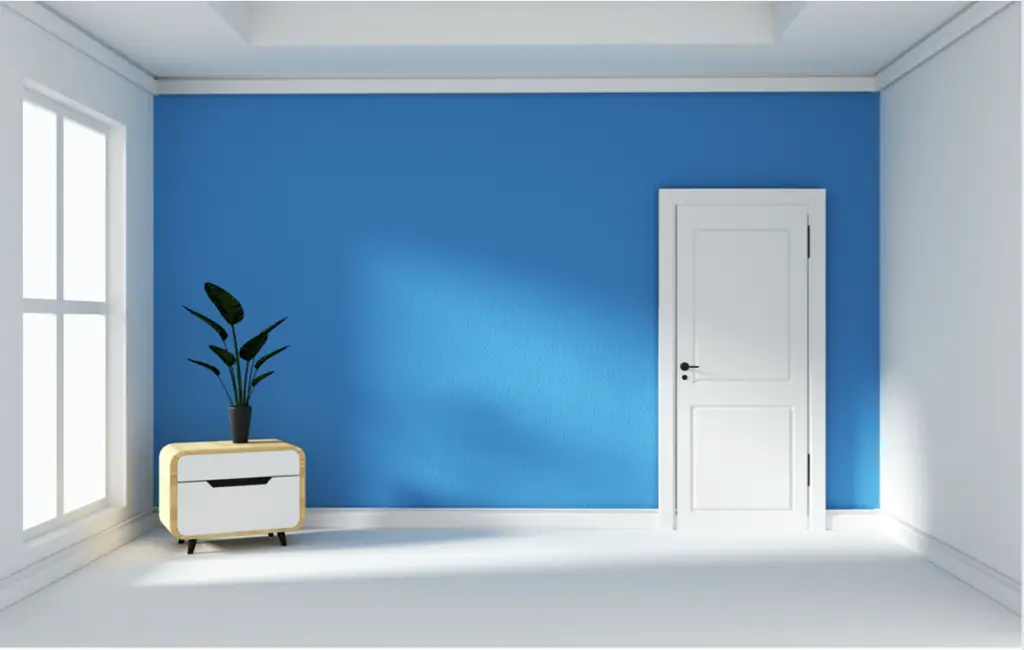
Conclusion
After analyzing the array “”which wall should be the accent wall,”” it is clear that choosing the right accent wall can greatly enhance the overall aesthetics and ambiance of a space. The array prompts us to consider the various walls in a room and determine which one should be highlighted as the accent wall. This decision is crucial as it can significantly impact the visual appeal and focal point of the room.
When deciding which wall should be the accent wall, several factors need to be taken into consideration. Firstly, the size and layout of the room play a vital role. Typically, the accent wall is chosen to be the one that draws attention and creates a focal point. Therefore, it is often recommended to select a wall that is directly visible upon entering the room or one that naturally stands out due to its size or architectural features.
Another important consideration is the color scheme and overall design of the living room. The accent wall should complement the existing décor and color palette while adding a touch of visual interest. It can be painted in a contrasting color or adorned with wallpaper or textured finishes to create a striking visual impact. By carefully selecting the accent wall, one can create a harmonious and balanced look that enhances the overall aesthetic appeal of the space.



